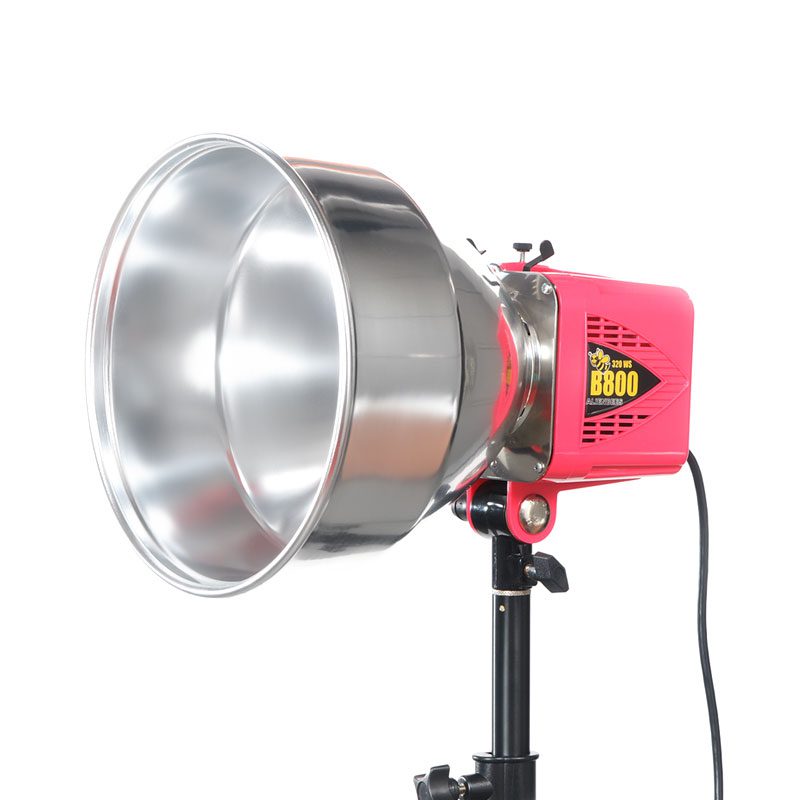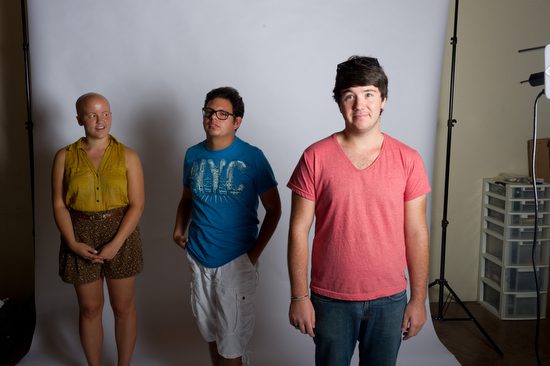
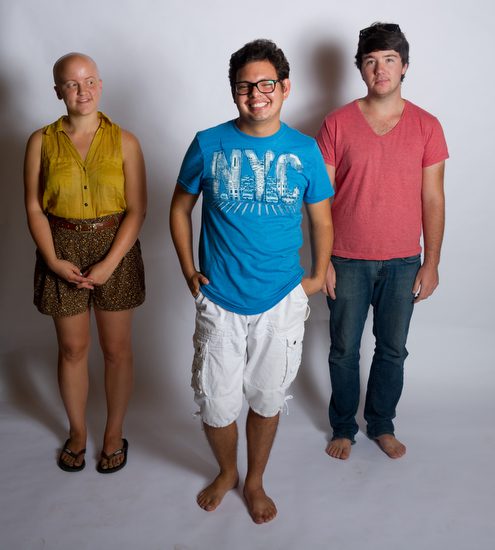
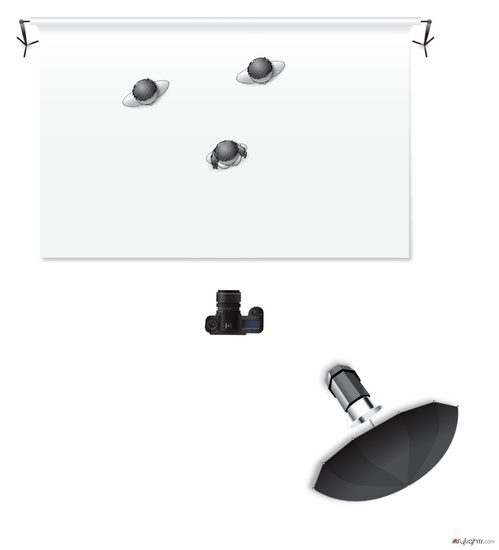
After seeing the photos above, one of the first things people think they need to do is add another light. No question this would help solve our lighting problem.
Now let’s be realistic here. Most photographers starting will have just one light and cannot justify another light until some income begins. How do you solve the problem in just one morning?
Inverse-Square Law
We need to first start with understanding the Inverse-Square Law of Light.
In physics, an inverse-square law is any physical law stating that a specified physical quantity or strength is inversely proportional to the square of the distance from the source of that physical quantity. (Wikipedia)
In photography, an object twice the distance from a point source of light will receive a quarter of the illumination.
How this is used most often in photography is to figure your exposure. If you want to keep the same f/stop when you move a light twice the distance from the subject, you must increase the power four times. Inversely, if you move the lamp twice as close, you will need to power down the light to 1/4 the power to keep the same f/stop.
Using the Inverse-Square Law of light for Group Photo
The further you move the light from a group, the difference between the light falling on the subjects’ faces will become less and less different. The reason is that the distance of each subject to the light source as compared to others in the group will be so small of a difference that they will appear to be more evenly lighted.
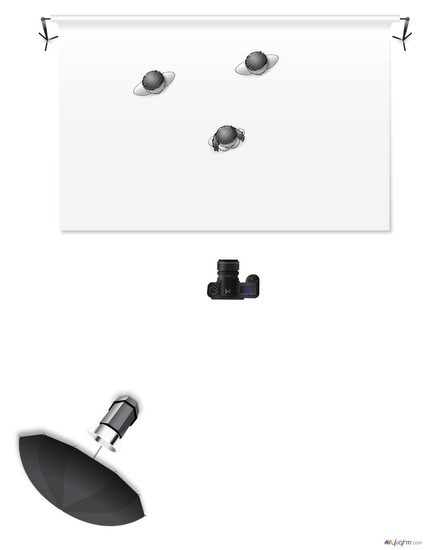
The only thing that changes from the first diagram to this one is the light source is moved further from the group and moved the light to the left side.
As shown in the lighting diagram, I have moved the light source further from the group. I suggest moving the light as far as possible from the group to get the evenest amount of light.
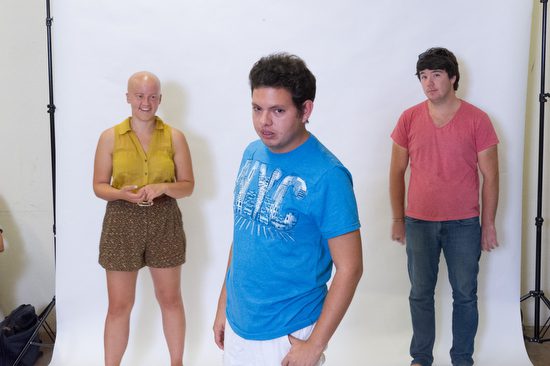
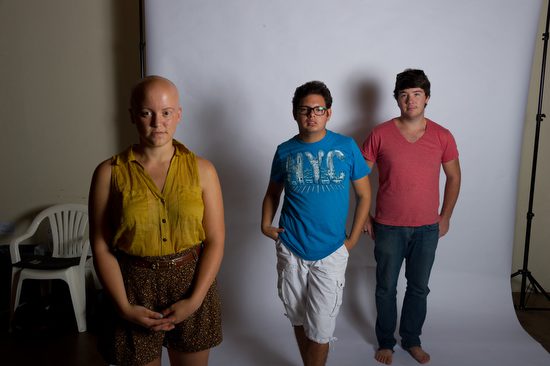
Technical Changes
- ISO: You may need to use a higher ISO to have your flash still be affective. You may change from ISO 100 to as high as ISO 3200. Remember that since you are using a flash the noise is not the same and actually can appear to disappear. (link to earlier blog on this)
- Aperture: With group photos you will want to use f/8 or higher to be sure everyone is in focus. If you use f/2 for example your group photo above would look more like a solo act and their backup singers and not like a musical group.
- Studio Strobe vs Hot Shoe Flash: This is when it makes more sense to own a studio flash than a hot shoe flash. You can get more power and recycle time is much quicker. (Earlier Blog Post comparing hot shoe flash and studio light)
You can buy hot shoe flashes for under $90. These hot shoe flashes are not TTL, but you can use them in manual mode just as you would a studio strobe. They are just less powerful and take a while to recycle.
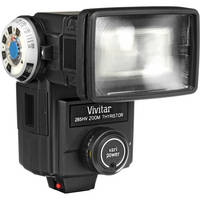
Practice making a group photo and getting everyone evenly lighted using just one flash. Understanding and mastering this skill will help you when you have a limited amount of equipment and still need a professional photo of a group.

